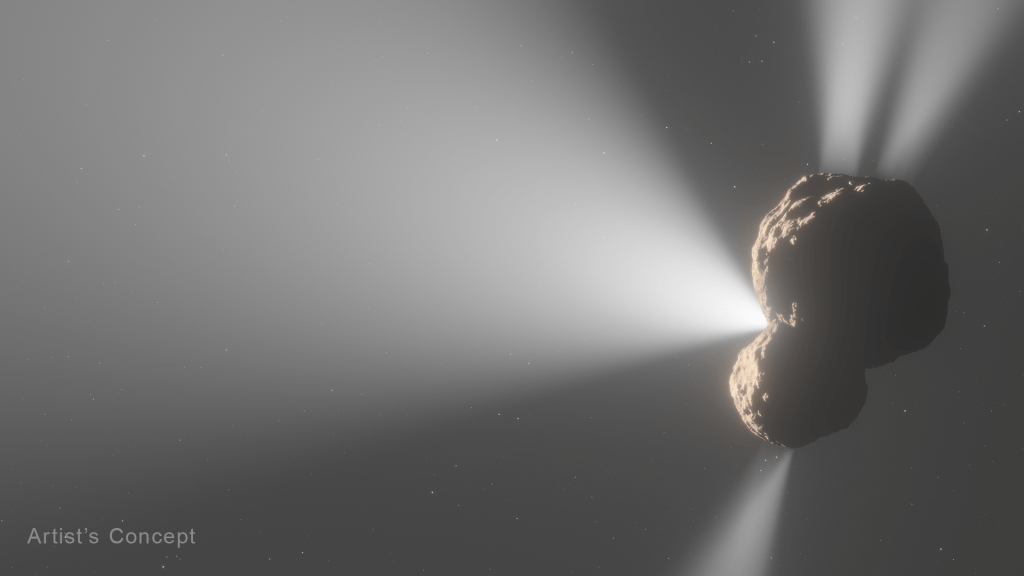Centaurs: The Preserved Relics of Our Solar System’s Early Days
Centaurs, a unique class of celestial bodies, are considered remnants from the formation of our planetary system. Due to their storage at extremely cold temperatures, these objects retain crucial information about the volatile compounds present during the early stages of the solar system. Sara Faggi of NASA’s Goddard Space Flight Center in Greenbelt, Maryland, and American University in Washington, DC, who is the lead author of a recent study, emphasizes the significance of this discovery. “Webb really opened the door to a resolution and sensitivity that was impressive to us — when we saw the data for the first time, we were excited. We had never seen anything like this,” she said.
Understanding Centaurs
Centaurs are small celestial objects that exhibit characteristics of both asteroids and comets. They primarily orbit between Jupiter and Neptune, making them part of a transitional population that can offer insights into the solar system’s past. What sets Centaurs apart is their ability to preserve the volatile substances that were present in the early solar system, thanks to their cold storage conditions.
Revolutionary Observations with the James Webb Space Telescope
The James Webb Space Telescope (JWST) has provided unprecedented resolution and sensitivity in observing these distant objects. This groundbreaking technology allowed scientists to gather data on Centaurs with a level of detail never seen before. The JWST’s advanced capabilities have opened new avenues for understanding the composition and behavior of these ancient celestial bodies.
The Importance of Volatiles
Volatiles are substances that can easily transition from solid or liquid to gas at relatively low temperatures. In the context of the early solar system, these include water, methane, ammonia, and other organic compounds. By studying Centaurs, scientists can gain insights into the distribution and abundance of these volatiles during the formative years of our planetary system.
Key Findings from the Study
The study led by Sara Faggi revealed several significant findings:
1. Unprecedented Data Quality
The data obtained from the JWST was of exceptional quality, offering a level of detail that exceeded previous observations. This high-resolution data allowed researchers to analyze the composition of Centaurs more accurately.
2. Detection of Volatiles
For the first time, scientists were able to detect specific volatile compounds in Centaurs with high precision. This discovery provides crucial information about the materials that were present in the early solar system and their potential role in the development of planetary bodies.
3. Insights into Solar System Formation
The presence of these volatiles supports existing theories about the conditions and processes that shaped our solar system. By understanding the distribution and composition of these compounds, scientists can refine their models of planetary formation and evolution.
Implications for Future Research
The findings from this study have significant implications for future research in planetary science. The ability to observe and analyze Centaurs with such precision opens up new possibilities for understanding the early solar system. Future missions and studies can build on this work to explore other distant objects and gather more data on the distribution of volatiles.
Good to Know: The Role of JWST in Astronomical Research
The James Webb Space Telescope is considered one of the most powerful and advanced space observatories ever built. It was designed to complement and extend the discoveries made by the Hubble Space Telescope, providing deeper insights into the universe. The JWST’s primary goals include studying the formation of stars and planets, understanding the evolution of galaxies, and exploring the potential for life in other parts of the universe.
Reactions from the Scientific Community
The scientific community has reacted with enthusiasm to the findings from this study. Many researchers see this as a significant step forward in our understanding of the solar system’s history. The ability to detect and analyze volatiles with such precision is expected to open up new avenues for research and discovery.
Conclusion
The study of Centaurs and the detection of volatiles from the early solar system mark a significant milestone in planetary science. Thanks to the unprecedented capabilities of the James Webb Space Telescope, scientists can now explore these ancient celestial bodies with a level of detail never before possible. This research not only enhances our understanding of the solar system’s formation but also paves the way for future discoveries. As we continue to explore the cosmos, the insights gained from studying Centaurs will undoubtedly play a crucial role in unraveling the mysteries of our planetary origins.
For more Information, Refer to this article.


































